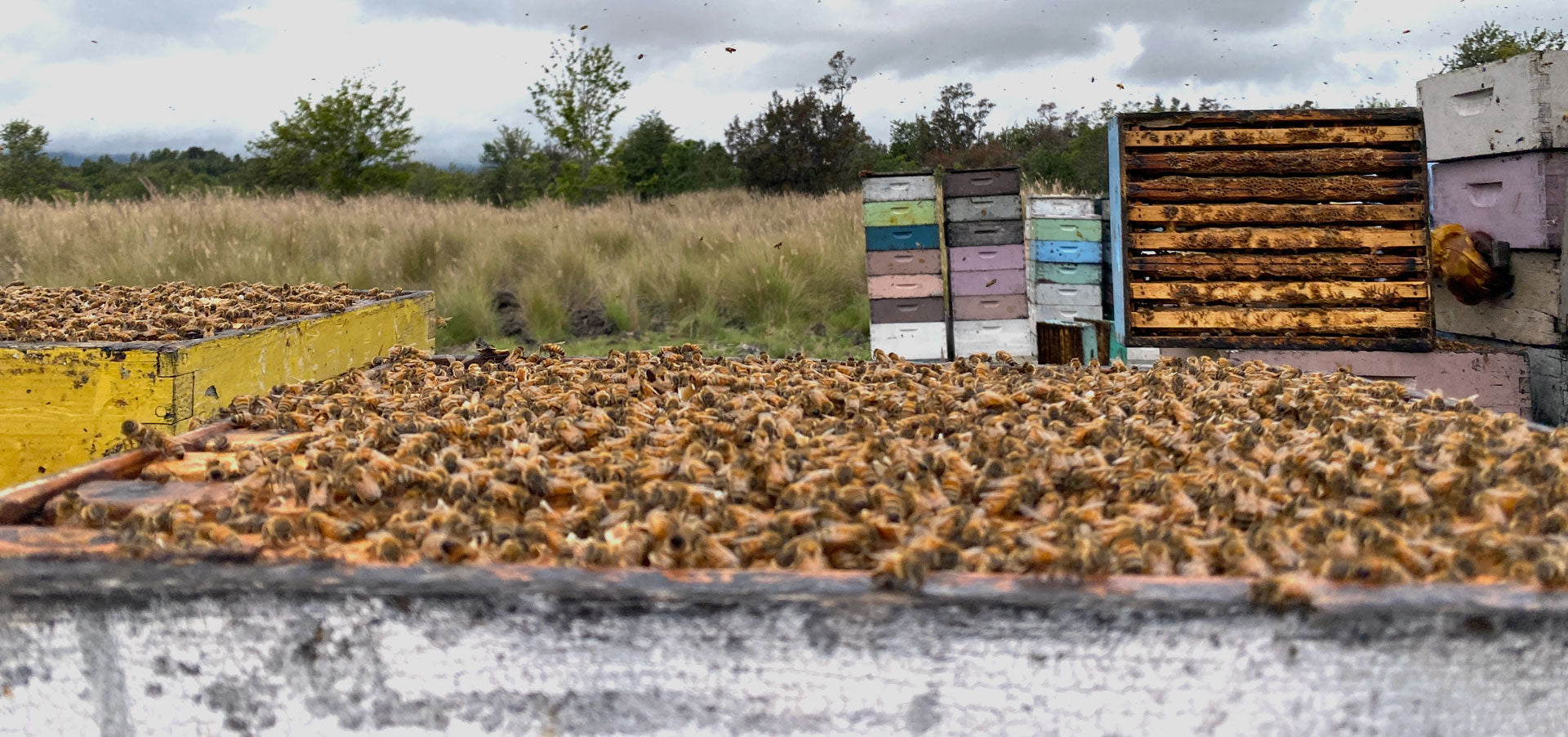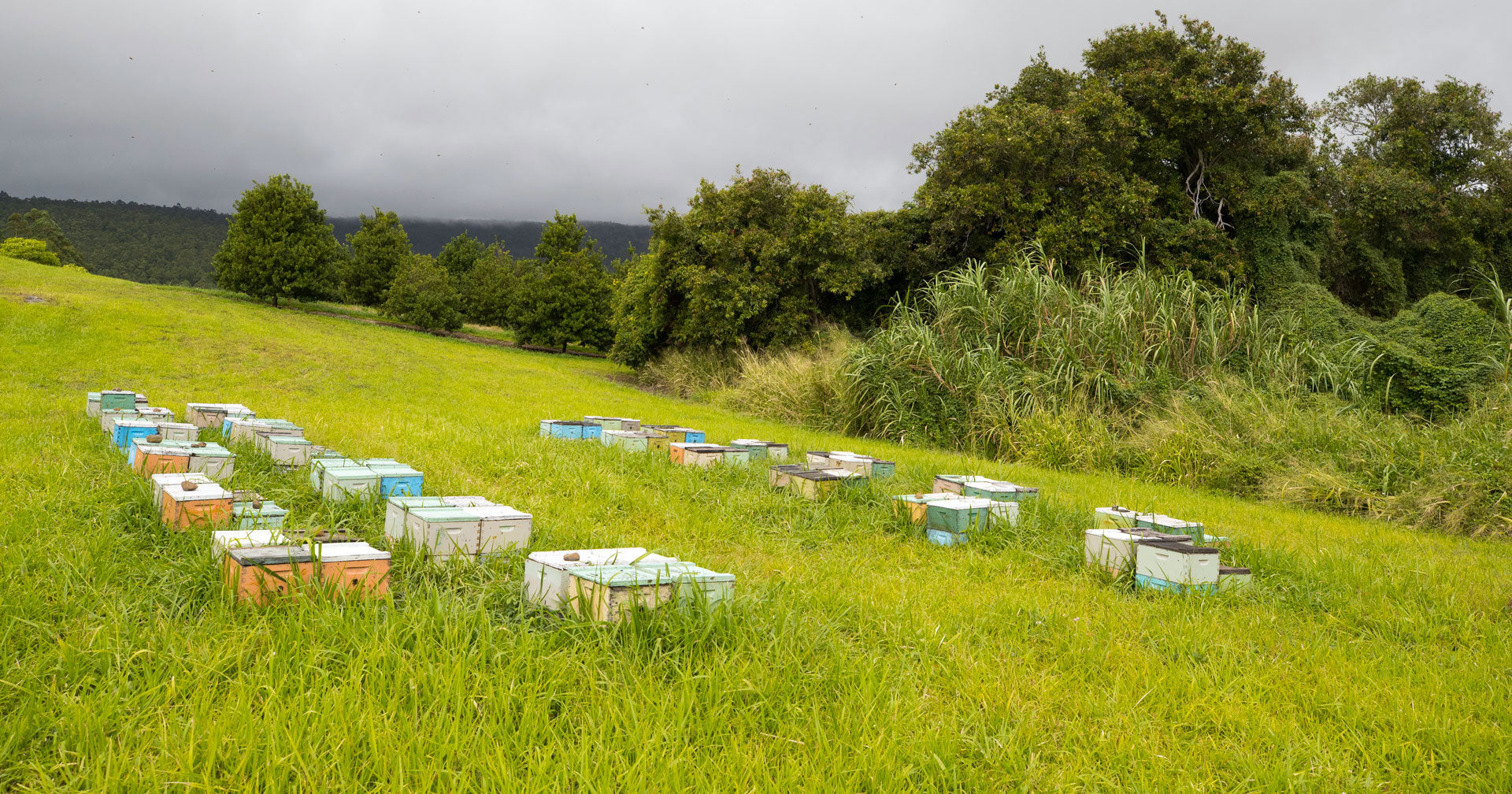Most of us have heard the old adage: You are what you eat. And many people recognize that the quality of meat and dairy products is directly related to how animals are raised and what they eat.
But did you know the quality of honey is also predominately influenced by what bees eat?
While feeding bees honey might sound obvious, many commercial beekeepers use sugar-water and corn syrup substitutes instead, either because they are less expensive or they don’t have the benefit of managing in an area with year-round operations.
We are fortunate in Hawaii to be able to produce honey year-round, in three separate seasons, during which our bees collect and consume the nectar from one type of blossom: Macadamia Nut Blossom during winter; Ohia-Lehua Blossom during spring; and Wilelaiki Blossom in autumn.
But what about between these honey flows? What do the bees eat then?
Our practice is to leave each hive with about 20 to 30 pounds of honey to consume between honey flows. In addition, we reserve 5 percent of each hive’s production of honey as a backup food supply.
We believe that only using nectar and honey to feed our bees produces healthier bees and better honey.


